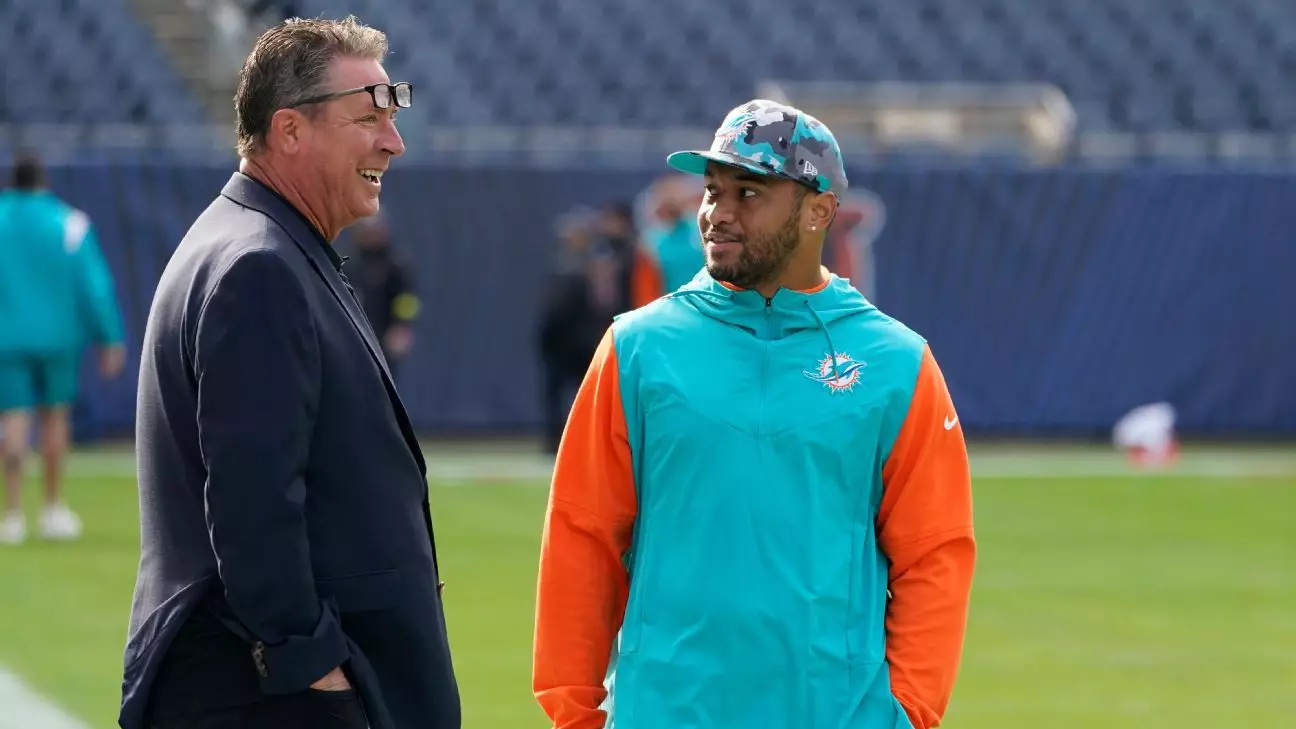As the Miami Dolphins strive to reclaim their past glory, all eyes are on Tua Tagovailoa, the young quarterback who has emerged as a hopeful leader for the franchise. Renowned Hall of Famer Dan Marino, an iconic figure in Dolphins history, has publicly rallied behind Tagovailoa. However, Marino’s endorsement comes with an important caveat: the team must prioritize keeping Tagovailoa healthy. This issue of health has overshadowed Tagovailoa’s promising statistics and potential, calling into question whether he can truly be the cornerstone of Miami’s aspirations.
Throughout the previous season, Tagovailoa encountered significant obstacles related to injuries. Missing a total of six games—including four due to concussions and two more from a hip pointer—has raised valid concerns regarding his durability. Marino’s remarks on “The Pat McAfee Show” indicate a shared understanding within the Dolphins organization of the implications of these injuries. The franchise has a lengthy history of dealing with quarterback struggles, and to have a player with Tagovailoa’s talent is a double-edged sword if he cannot consistently be on the field.
General Manager Chris Grier’s insight into Tagovailoa’s situation highlights a critical concern. He emphasizes that the young star must enhance his self-protection strategies on the field. The phrase “he needs to control what he can control” encapsulates a broader approach that extends beyond just physical health—it represents a mental readiness to navigate the challenges of being a quarterback in the NFL. This preparation can be the difference between a successful campaign and a season riddled with setbacks.
The Dolphins’ performance last season was a testament to their potential, as they showcased a formidable offensive scheme led by Tagovailoa. Despite his absences, he managed to post an impressive 72.9% completion rate, leading the league in that category. Nevertheless, his absences not only limit his personal development but also disrupt the team’s overall rhythm and chemistry. As Marino noted, injuries can derail a promising trajectory, especially when the team is fighting for a playoff spot late in the season.
For Miami to realize their dreams of postseason glory, finding a way to secure Tagovailoa’s health is imperative. This includes a holistic approach incorporating sports science, injury prevention tactics, and perhaps even modified gameplay strategies that reduce the likelihood of injury. The Dolphins must invest in medical technology and training programs, equipping Tagovailoa with the resources needed for success. Addressing these issues is not merely for Tagovailoa’s sake but also for the team’s overall future.
Ultimately, Tagovailoa’s commitment to improvement reflects an awareness of the stakes involved. Despite his previous injuries and frustrations expressed at the end of last season, his determination to enhance his availability showcases a maturity that could bode well for the Dolphins’ future. By echoing the sentiments of both Marino and Grier, Tagovailoa demonstrates his understanding that continuous improvement is key to long-term success in the NFL.
The Miami Dolphins stand at a crossroads, with Tua Tagovailoa representing both hope and challenge. With Dan Marino’s endorsement, there’s an air of optimism surrounding the franchise, yet it is tempered by the pressing need for Tagovailoa to stay healthy. As the offseason approaches, a comprehensive game plan to safeguard Tagovailoa’s longevity must take center stage. The team’s ability to navigate this challenge may determine not only Tagovailoa’s future but also the franchise’s quest to reclaim its place among the NFL’s elite. The stakes are high, and every effort must be made to ensure Tua’s brilliance translates into sustained success on the field.


Leave a Reply